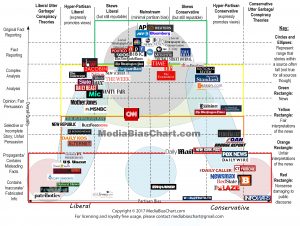A study was done on bias about climate change in three major news sources including CNN, Fox, and MSNBC. Today, scientists mostly agree that climate change is a real, human caused problem. Media coverage in general in the US does not do a great job at representing this because media usually downplays the issue. The Project for Excellence in Journalism has found that over half (52%) of news stories from the three major news sources mentioned only covered one side of an issue. This leads to increased polarization in a society that already has difficulty coming together.
Some statistics:
33% of climate change stories from Fox News challenged its existence
Virtually no stories from CNN or MSNBC did
Confirmation of climate change:
Fox- 21%
CNN- 71%
MSNBC- 52%
Claimed that climate change is caused by humans:
Fox- 14%
CNN- 61%
MSNBC- 33%
Claimed that climate change was natural:
Fox- 29%
CNN- 3%
MSNBC- 0%
Featured guests on Fox:
Climate change believers- 39.6%
Climate change doubters- 46.3%
Undetermined- 14.1%
Featured guests on CNN:
Climate change believers- 77.4%
Climate change doubters- 17%
Undetermined- 5.7%
Featured guests on MSNBC
Climate change believers- 55%
Climate change doubters- 15%
No stance- 30%
Key takeaways: Out of the three sources, (Fox, CNN, and MSNBC) MSNBC is the place to go if you are looking for the least biased news on this particular issue. If you are reading to be able to engage in intelligent conversation about this topic, or any topic in general, it is best to read from several different sources to get the whole story

